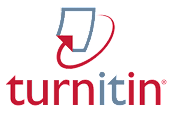Garbage Image Classifier using Modified ResNet-50
Abstract
Keywords
Full Text:
Link DownloadReferences
Ahmed, M. I. B., Alotaibi, R. B., Al-Qahtani, R. A., Al-Qahtani, R. S., Al-Hetela, S. S., Al-Matar, K. A., Al-Saqer, N. K., Rahman, A., Saraireh, L., Youldash, M., & Krishnasamy, G. (2023). Deep Learning Approach to Recyclable Products Classification: Towards Sustainable Waste Management. 15, no. 14: 11138. https://doi.org/10.3390/su151411138.
Bircanoglu, C., Atay, M., Beser, F., Genc, O., & Kizrak, M. A. (2018). RecycleNet: Intelligent Waste Sorting Using Deep Neural Networks. 2018 Innovations in Intelligent Systems and Applications (INISTA), 1–7. https://doi.org/10.1109/INISTA.2018.8466276
Cao, L., & Xiang, W. (2020). Application of Convolutional Neural Network Based on Transfer Learning for Garbage Classification. 2020 IEEE 5th Information Technology and Mechatronics Engineering Conference (ITOEC), 1032–1036. https://doi.org/10.1109/ITOEC49072.2020.9141699
Chen, H., Xiong, F., Wu, D., Zheng, L., Peng, A., Hong, X., Tang, B., Lu, H., Shi, H., & Zheng, H. (2017). Assessing impacts of data volume and data set balance in using deep learning approach to human activity recognition. 2017 IEEE International Conference on Bioinformatics and Biomedicine (BIBM), 1160–1165. https://doi.org/10.1109/BIBM.2017.8217821
Dubey, S., Singh, P., Yadav, P., & Singh, K. K. (2020). Household Waste Management System Using IoT and Machine Learning. Procedia Computer Science, 167, 1950–1959. https://doi.org/10.1016/j.procs.2020.03.222
Gupta, T., Joshi, R., Mukhopadhyay, D., Sachdeva, K., Jain, N., Virmani, D., & Garcia-Hernandez, L. (2022). A deep learning approach based hardware solution to categorise garbage in environment. Complex & Intelligent Systems, 8(2), 1129–1152. https://doi.org/10.1007/s40747-021-00529-0
Hussain, M., Bird, J. J., & Faria, D. R. (2019). A Study on CNN Transfer Learning for Image Classification. In A. Lotfi, H. Bouchachia, A. Gegov, C. Langensiepen, & M. McGinnity (Eds.), Advances in Computational Intelligence Systems (Vol. 840, pp. 191–202). Springer International Publishing. https://doi.org/10.1007/978-3-319-97982-3_16
Irmawartini, I., Mulyati, S. S., & Pujiono, P. (2023). Pengelolaan Sampah dari Hulu ke Hilir di Kota Bandung. Jurnal Kesehatan Lingkungan Indonesia, 22(2), 229–236. https://doi.org/10.14710/jkli.22.2.229-236
Islam, W., Jones, M., Faiz, R., Sadeghipour, N., Qiu, Y., & Zheng, B. (2022). Improving Performance of Breast Lesion Classification Using a ResNet50 Model Optimized with a Novel Attention Mechanism. Tomography, 8(5), 2411–2425. https://doi.org/10.3390/tomography8050200
Jabir, B., & Falih, N. (2021). Dropout, a basic and effective regularization method for a deep learning model: A case study. Indonesian Journal of Electrical Engineering and Computer Science, 24(2), 1009. https://doi.org/10.11591/ijeecs.v24.i2.pp1009-1016
Kocaman, V., Shir, O. M., & Back, T. (2021). Improving Model Accuracy for Imbalanced Image Classification Tasks by Adding a Final Batch Normalization Layer: An Empirical Study. 2020 25th International Conference on Pattern Recognition (ICPR), 10404–10411. https://doi.org/10.1109/ICPR48806.2021.9412907
Koklu, M., & Ozkan, I. A. (2020). Multiclass classification of dry beans using computer vision and machine learning techniques. Computers and Electronics in Agriculture, 174, 105507. https://doi.org/10.1016/j.compag.2020.105507
Maalouf, A., & Mavropoulos, A. (2023). Re-assessing global municipal solid waste generation. Waste Management & Research: The Journal for a Sustainable Circular Economy, 41(4), 936–947. https://doi.org/10.1177/0734242X221074116
Meng, S., & Chu, W.-T. (2020). A Study of Garbage Classification with Convolutional Neural Networks. 2020 Indo – Taiwan 2nd International Conference on Computing, Analytics and Networks (Indo-Taiwan ICAN), 152–157. https://doi.org/10.1109/Indo-TaiwanICAN48429.2020.9181311
Mohamed, M. (2021). Garbage Classification (12 classes) [dataset]. https://www.kaggle.com/datasets/mostafaabla/garbage-classification.
Nguyen, Q. H., Ly, H.-B., Ho, L. S., Al-Ansari, N., Le, H. V., Tran, V. Q., Prakash, I., & Pham, B. T. (2021). Influence of Data Splitting on Performance of Machine Learning Models in Prediction of Shear Strength of Soil. Mathematical Problems in Engineering, 2021, 1–15. https://doi.org/10.1155/2021/4832864
Qonitan, F. D., Wayan Koko Suryawan, I., & Rahman, A. (2021). Overview of Municipal Solid Waste Generation and Energy Utilization Potential in Major Cities of Indonesia. Journal of Physics: Conference Series, 1858(1), 012064. https://doi.org/10.1088/1742-6596/1858/1/012064
Sami, K. N., Amin, Z. M. A., & Hassan, R. (2020). Waste Management Using Machine Learning and Deep Learning Algorithms. International Journal on Perceptive and Cognitive Computing, 6(2), 97–106. https://doi.org/10.31436/ijpcc.v6i2.165
Sarwinda, D., Paradisa, R. H., Bustamam, A., & Anggia, P. (2021). Deep Learning in Image Classification using Residual Network (ResNet) Variants for Detection of Colorectal Cancer. Procedia Computer Science, 179, 423–431. https://doi.org/10.1016/j.procs.2021.01.025
Steiniger, Y., Stoppe, J., Meisen, T., & Kraus, D. (2020). Dealing With Highly Unbalanced Sidescan Sonar Image Datasets for Deep Learning Classification Tasks. Global Oceans 2020: Singapore – U.S. Gulf Coast, 1–7. https://doi.org/10.1109/IEEECONF38699.2020.9389373
Victor Ikechukwu, A., Murali, S., Deepu, R., & Shivamurthy, R. C. (2021). ResNet-50 vs VGG-19 vs training from scratch: A comparative analysis of the segmentation and classification of Pneumonia from chest X-ray images. Global Transitions Proceedings, 2(2), 375–381. https://doi.org/10.1016/j.gltp.2021.08.027
Wang, C., Qin, J., Qu, C., Ran, X., Liu, C., & Chen, B. (2021). A smart municipal waste management system based on deep-learning and Internet of Things. Waste Management, 135, 20–29. https://doi.org/10.1016/j.wasman.2021.08.028
Xia, W., Jiang, Y., Chen, X., & Zhao, R. (2022). Application of machine learning algorithms in municipal solid waste management: A mini review. Waste Management & Research: The Journal for a Sustainable Circular Economy, 40(6), 609–624. https://doi.org/10.1177/0734242X211033716
Yang, Z., Xia, Z., Yang, G., & Lv, Y. (2022). A Garbage Classification Method Based on a Small Convolution Neural Network. Sustainability, 14(22), 14735. https://doi.org/10.3390/su142214735
DOI: http://dx.doi.org/10.35671/telematika.v17i2.2873
Refbacks
- There are currently no refbacks.
Indexed by:
Telematika
ISSN: 2442-4528 (online) | ISSN: 1979-925X (print)
Published by : Universitas Amikom Purwokerto
Jl. Let. Jend. POL SUMARTO Watumas, Purwonegoro - Purwokerto, Indonesia
![]() This work is licensed under a Creative Commons Attribution 4.0 International License .
This work is licensed under a Creative Commons Attribution 4.0 International License .







